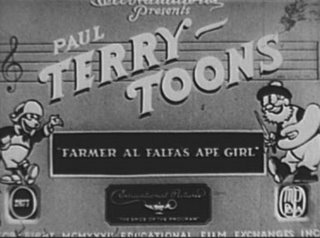
When I first saw the earliest sound Terrytoons from 1930, about ten years ago, I wasn't particularly impressed. They seemed rather crude and uninspired, few notches below the Disney, Fleischer, or even Van Beuren cartoons from the same era. I dismissed them as just a curiosity of historical value and nothing more. Similar opinions were expressed in various animation history books. Usually, these cartoons were described as a routine time fillers, of no particular interest.

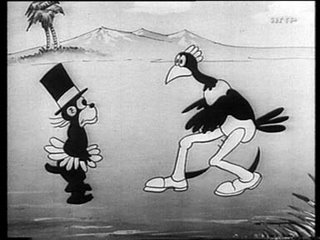
However, my opinion on early Terrytoons changed and improved in the recent years, particularly after having the opportunity to see more of them. The bad reputation of these cartoons is very much a result of their unavailability for several decades. They haven't been shown on TV probably since the early '60s, and there were absolutely no official video releases. Some of these cartoons could even be lost forever. It's really a shame, because these are actually quite charming and distinctive cartoons that can offer many surprises to the open-minded and unprejudiced viewer.


After all, cartoons that contain the early works of such giants of animation as Bill Tytla and Art Babbitt deserve special attention. Tytla stayed at Terrytoons until 1934, while Babbitt left in 1932. Beside them, the other significant Terrytoon animators during that period were Jerry Shields and Frank Moser. Shields was a veteran from the silent days, and collaborated with Terry since the beginning in 1919. Moser was the most prolific animator, often responsible for nearly half of footage on each cartoon. Also, he was Paul Terry's business partner, and the only person beside Terry and musical director Philip A. Scheib to receive the on-screen credit. A very interesting identification of various animators and their scenes was posted several months ago by Milton Knight on Animation History forum. You can read it here
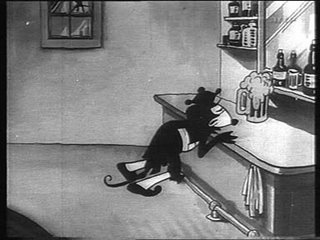

Paul Terry's studio had possibly the smallest crew and lowest budget of all studios, yet it was capable of producing an impressive output of 26 cartoons a year. Not every single one of them was great of course, and such gruelling schedule surely took its toll on the overall quality. Still, even the most routine cartoons had some interesting or sometimes even fascinating bits.


These early Terrytoons are stylistically compatible with the work of the other New York studios (Fleischer and Van Beuren), but they also differ from them in many ways. They maybe lack the nightmarish surrealism and intensity of the best Fleischer cartoons, yet they show an enjoyable "everything for a laugh" attitude. This is evident in all kinds of truly absurd gags, crazy walk cycles, bizarre cartoony animation and movement without some obvious reason or motivation. Plots for these cartoons are nearly non-existent, or ramble in all directions, barely making any sense. There's often just a basic setup and a string of gags that follow, without an effort to tell some particular story. I don't neccessarily consider this as a fault of any kind. In fact this approach (that might be a product of quick schedules or pure accident) gives an curious edge of unpredictability to these cartoons. You can't guess what kind of surprise is going to happen.

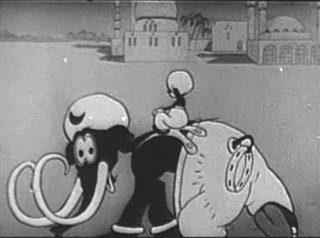

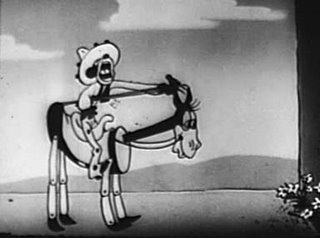
Occasionally you'll see some truly unexpected stuff, like this

or this...
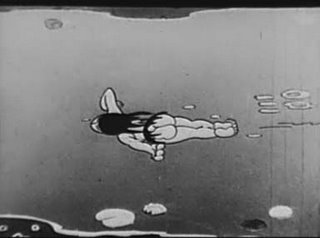
not to mention this... (there's something really suspicious about the shape of that horse's tail... it's even more blatantly evident when you see it in motion)
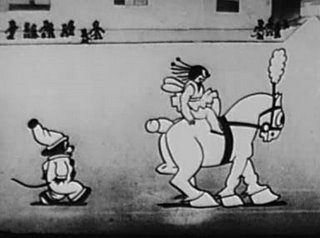
Animation quality is rather uneven in these cartoons, particularly during the 1930-31 period. Very often, some stiff animation reminiscent of Terry's silent Aesop's Fables from '20s was followed by truly inventive and original scenes. 1932 brought a considerable improvement in animation, and some really cartoony and wacky stuff started to appear with greater frequency.
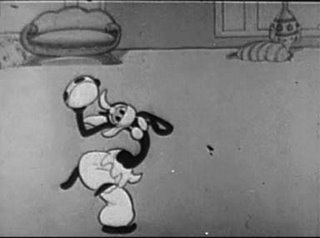
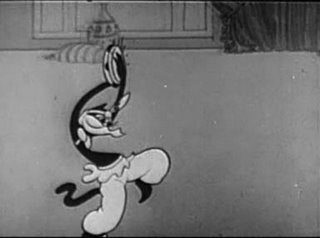

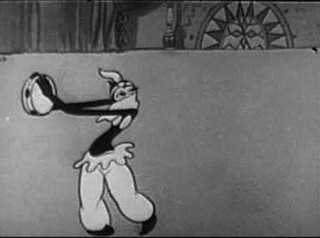
One distinctive feature of the first few Terrytoons is the brief prologue with the live action orchestra presented as the silhouette in the foreground. I'm not sure how many cartoons exactly had this opening, since it was cut from most of the prints years later. Today, it survives only in the very rare French theatrical prints. Here's an example...

The plots for the earliest 1930 cartoons take place in the various countries around the world. Locations are usually reflected in the titles like "Hot Turkey", "Spanish Onions", "Hungarian Goulash", "Hawaiian Pineapple", etc. This practice was abandoned by the end of 1930. As expected, all kinds of ethnic stereotypes are present in these cartoons.
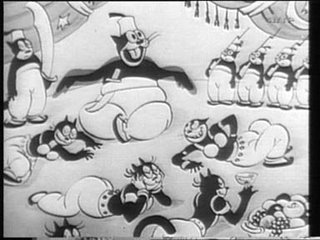

The main hero of these earliest Terrytoons was a mouse character. It's unknown whether he had any name originally. In the French prints, he's identified as "Placide". By the mid-1930, Terry's character from the silent days Farmer Al Falfa started to appear regularly, sometimes as the main hero, in other occasions just as a cameo.
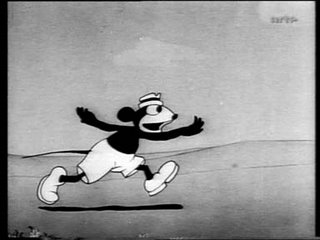
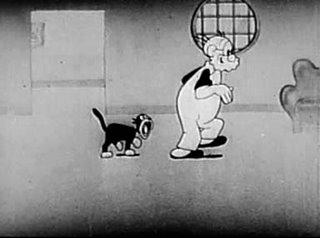
The first cartoon I'm soon going to present in great detail is "Golf Nuts". In this cartoon, the above mentioned mouse character plays golf, tries to fake the result, then brutally molests two Chinese cats. After that he's involved in a furious motorcycle chase, and finally visits both Heaven and Hell. All this in just six minutes!
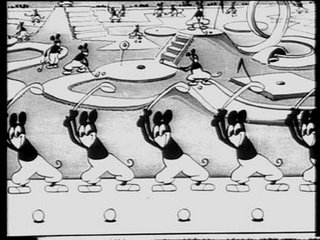
That's all for today. Stay tooned for more Terrytoons fun.
